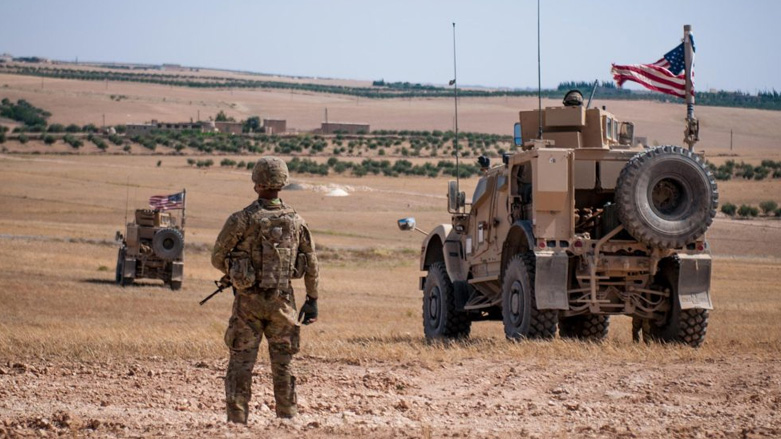US and Turkey reach accord, but concerns of Syrian Kurds continue

WASHINGTON DC (Kurdistan 24) — On Wednesday, the US and Turkey announced an agreement on northeast Syria, averting the immediate prospect of a Turkish cross-border assault that had hung over the negotiations.
READ MORE: US Secretary of Defense warns Turkey against attacking Syria, but Erdogan repeats his threat
The accord was announced at the end of three days of military-to-military talks in Ankara, which “made progress toward establishing a sustainable security mechanism in northeast Syria that addresses the legitimate concerns of our NATO ally Turkey,” Pentagon Spokesperson, Cmdr. Sean Robertson, told Kurdistan 24.
A Joint Operations Center will be established in Turkey “to continue planning and implementation,” Robertson said, while he affirmed that the US “mission in Syria remains the enduring defeat of ISIS.”
“The security mechanism will be implemented in stages,” and the US “is prepared to begin implementing some activities rapidly, as we continue discussions with Turkey,” he concluded.
The US embassy in Ankara explained the agreement in terms of three points, largely—but not entirely—similar to the Pentagon’s account:
- “The rapid implementation of initial measures to address Turkey’s security concerns”
- Establishing “a joint operations center in Turkey” to “coordinate and manage the establishment of the safe zone together”
- “The safe zone shall become a peace corridor, and every effort shall be made so that displaced Syrians can return to their country.”
Nicholas Heras, a Fellow at the Center for a New American Security, summarized the new accord as “an agreement to talk more.” In a tweet, Heras explained that the basic US goal had been to “keep Turkey from unilaterally invading northeast Syria.”
The big issue for Turkey is the Kurdish-led Syrian Democratic Forces (SDF). Ankara considers the People’s Protection Units (YPG), which provides that leadership, the Syrian wing of the Kurdistan Workers’ Party (PKK).
As Heras noted, however, the “SDF leadership was essentially given real-time updates on the talks, as they were happening,” adding, “big respect.”
The population of northeastern Syria greeted news of the accord with substantial relief, a Kurdistan 24 reporter, Hisham Arafat, himself a Syrian Kurd, explained, as it means the threat of an imminent Turkish attack has been lifted.
But concerns persist, because “nothing is really clear,” Arafat said, referring to the account of the agreement issued by the US embassy, which it tweeted and which received wide attention.
The first point is “not new,” Arafat noted. The US has repeatedly said it recognizes Turkish security concerns and addressing them is part of US policy.
“That point is basically about the PKK,” Arafat explained, “but nothing will improve, if they keep focusing only on the PKK.”
“Yes, northeast Syria is run by the PKK commanders, but I think the PKK commanders are gradually becoming less,” Arafat continued. “Some are leaving, and some are changing their position.”
People with whom Arafat has spoken, as well as Arafat himself, regard the second point as quite positive. “A Joint Operations Center means there will be US control over the situation,” he said, “so Turkey will not be able to act alone in northeast Syria—to invade the area, or anything like that.”
However, Arafat pointed to one troubling point, as did Heras: the “peace corridor,” to which some unspecified number of the 3.6 million Syrian refugees in Turkey are to be moved.
As Arafat explained, most of the Syrian refugees in Turkey are from Idlib, Homs, Hama, and Aleppo. They typically have ties to the Turkish-backed opposition, “the extremists, the jihadis,” he stated.
“The central area of Syria” is the “most conservative” and “most extremist,” Arafat said. “Bringing people from those areas of Syria to Hasakah,” in the northeast, “or to Deir al-Zor,” some 200 kilometers to the south, “would be a very big demographic change.”
“It would be a disaster,” Arafat affirmed, “very similar to what the Baath party, the Syrian government, did in 1965, when it brought Arab families from Raqqa, Palmyra, and Homs to northeast Syria and gave them land.”
“At the same time, the regime tried to move Kurdish families from northeast Syria, to the desert, to Palmyra,” he explained.
Similarly, Heras asked in a tweet, “Which Syrian refugees exactly will be resettled in northeast Syria?” He continued, “Are they going to be locals from the region” and will they accept the administration now there?
Heras also asked another significant question: “What vetting will be done to ensure either ISIS agents or Turkish intel-backed Syrian rebel fighters won’t be seeded throughout northeast Syria?”
“The last thing” the SDF or US-led Coalition “wants is ISIS-strengthened or Harakat Qiyams to sprout everywhere,” he warned.
Indeed, it is precisely on this point that the Pentagon account of the agreement differs from that disseminated by the US embassy in Ankara.
The Pentagon account—as provided to Kurdistan 24, by Cmdr. Robertson—makes no mention of bringing Syrian refugees into northeast Syria. Indeed, it makes no mention of a “peace corridor”—an Orwellian term that Turkey introduced into the discussion. It does not even mention a “safe zone,” but, rather, refers to a “security mechanism.”
Thus, the status of that third point—the transfer of Syrian refugees into northeastern Syria—as cited by the US embassy in Ankara, may, perhaps, be less clear-cut than would first appear.
Editing by Nadia Riva
